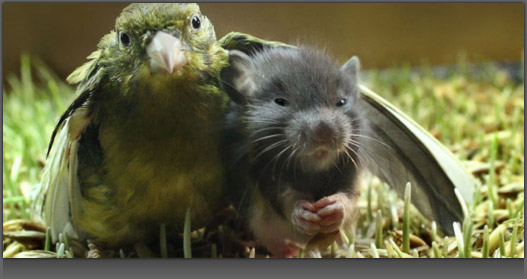
From Crisis … Toward Conscious Evaluation

Romantic maintenance is the work we need to do to convince ourselves and others that we should continue to invest our time and energy in the only relationship model we have been given … bonding.
The Shambhala Master
Stories like Sleeping Beauty, Snow White, Beauty and the Beast, and Cinderella appear to have one universal theme — boy gets girl and they live happily ever after. However, the mythical adventure every prince and princess embarks upon is a symbolic pilgrimage we are all Called* to take into the depths of ourselves.
My Lady
BEYOND BONDING
Shambhala wisdom teaches us that there are many people who are not interested in bonding (being contractually committed) for a week, much less for a lifetime, to only one person, one career, or one philosophy. My Shambhala Masters taught me that there have always been many people who want to create multifaceted, emotionally intense, dynamic, sexually romantic relationships that are bridged rather than bonded. (For more information on bonded vs. bridged relationships see the previous section FROM BONDING … TOWARD BRIDGING.)
Ancient wisdom tells us that there are many people looking for Shambhala relationships with partners they can respect and love … partners who are best friends, spiritual-travelers, co-learners, compatriots, colleagues, and Intimates. Shambhala Masters know that these brave souls have for centuries dared to adventure beyond pair bonding.
Shambhala relationships can be non-romantic, non-sexual, and shared with more than one person. Or they can be wonderfully romantic, intimately sexual, and monogamous, or everything in between. Shambhala bridging can include whole communities of individuals with shared Shambhala perspectives and Self-loyalty. Shambhala relationships can be created with either gender, with individuals half your age, or people twice as old, or with individuals from all different financial strata, walks of life, religions, and cultural backgrounds. The healthiest Shambhala relationships are between people who are mutually freeing themselves of stereotypes, illusions, and socially prescribed ways of relating to themselves and others.
Healthy Shambhala relationships are no different now than they have been through out the ages of antiquity. Healthy Shambhala relationships are the same as healthy business partnerships … both need to continually grow and change. They need to be constantly re-evaluated. Ancient wisdom has taught my ancestors that healthy bridged relationships continue to exist only as long as they serve the practical and deeply personal interests of all the people involved.
WHICH COMES FIRST
Shambhala students know that they can enjoy many romantic moments within their Shambhala relationships as long as they do not put their relationships with others before their relationship with their Selves. Shambhala students enjoy fresh excitement and emotional intensity within relationships with decades of continuity as long as they do not give up their autonomy to secure these relationships.
Shambhala students do not come together to strengthen each other’s weaknesses. Nor do they covet the strengths and talents in their partners that they fear they can not develop in themselves. On the contrary, they see in others the kind of strengths and talents which, when added to their own strengths and talents, created impressive, powerful partnerships that are bridged rather than bonded.
THE AGE OF SELF-SUFFICIENCY
Shambhala Masters know that opposite sex pair bonding was once a necessity when physical survival was dependent on the hunter/gatherer division of labor. In primitive times, the man took on the role of the hunter because his mobility was never limited by pregnancy. The woman, on the other hand, frequently tended the home fires and practiced the domestic arts because she could do these things with her more limited mobility during pregnancy and while caring for her children.
But Shambhala wisdom teaches us that it has been a long time since we have been dependent on persons of the opposite sex for our physical survival. Consequently, the pragmatic need for opposite sex pair bonding has rapidly disappeared. Yet, children through out the ages have been and still are exposed to only one acceptable relationship model. Most people are given only one lifestyle possibility that is supposed to provide personal and emotional fulfillment. This model is opposite sex pair bonding. But if personal survival is not going to magnetically draw us into bonding, then societies have to create another motivation or “social glue” to lead us into opposite sex pair bonding.
We must be taught to over-focus on "romantic" justifications for pair bonding. We must be taught to see ourselves as half persons. We must be taught that we need to find another person of the opposite sex to complete ourselves – to make ourselves whole. We must be taught to revere “romantic” dependence to justify the only relationship model we know … bonding.
Societies must create romantic justifications to sustain the “bonding” relationship model which, in its inception, needed no romantic glue for its motivation or maintenance. Today most people cannot imagine pair bonding in the absence of romance. As these romantic justifications are passed down generation to generation the romantic quotient of pair bonding grows more demanding.
This romantic quotient requires rigorous maintenance. Romantic maintenance is the work we need to do to convince ourselves and others that we should continue to invest our time and energy in the only relationship model we have been given … bonding. Throughout the ages Shambhala Masters have known that when people seek the promise of happiness, comfort, security, and continuity, and the only relationship model they have is opposite sex pair bonding, then these people must desperately cling to romantic justifications. Ancient wisdom teaches us that when people fear being alone, fear growing old alone, and fear not having someone of their own, they are stuck in the work of romantic maintenance and they are drowning in illusion.
My ancestors have always taught us that other relationship models do exist. Shambhala students are taught to require themselves to adventure into the unknown and to thoughtfully etch out new ways of living with others, developing new Shambhala relationship models for use by future generations. Shambhala students accept the age old challenge of our ancestors to forge new ways of loving and relating.
A TIME OF TRANSITION

The ancient Chinese word for “crisis” also means “opportunity”. Shambhala Master’s know that transition creates crisis because transitions are filled with the unfamiliar. The unpredictability of transitions are scary and difficult to manage. The scary crisis in transitions require novel perspectives and new skills. Ancient wisdom has taught my ancestors that it is these novel perspectives and new skills in the time of crises that expand our boundaries and open the door to “opportunity.”
This “Age of Self-Sufficiency” and all the transitional crisis accompanying it give Shambhala students the opportunity and the responsibility to create the Intimacy, support, nurturing, loyalty, communicational warmth, trust, continuity, and wholeness within ourselves that we have been romantically taught to seek in someone else. This “Age of Self-Sufficiency” offers Shambhala students the possibility of surrounding ourselves with exciting people, both male and female, young and old, and culturally diverse to create communities that nurture our relationships with our Selves.
Our needs for community are as important as they have ever been, perhaps even more important during this “Age of Self-Sufficiency,” this time of transition, and all the crises that accompany it. But the reasons for creating relationships and community have changed. The reasons for creating relationships no longer center around domestic, social, physical, emotional or economic survival. Shambhala students recognize this unique “opportunity” and they accept the challenge and the responsibility to create bridged relationships that nurture Self-loyalty and foster personal excellence.
*The word “Called,” is spelled with a bold capital “C.” The Shambhala Master uses bold capitals when referring to the primal, Core, spiritual essence of a word, as opposed to the conventional understanding of the word. Please consult the Master’s Glossary for the definition of this and other unfamiliar terms.
For more Shambhala Wisdom, visit www.shambhalablackbelts.com.
